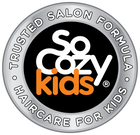Any parent that’s had the displeasure of delousing their little one will tell you that the process is an itchy inconvenience to be avoided at all costs. Treating head lice can be a tedious and time-consuming process. To add to the stress, lice and their eggs, called nits, are so imperceptibly tiny, they are almost unavoidable! Almost.
Fortunately, proactive prevention of head lice is possible. While there is no way to guarantee a lice-free environment for your child, there are many methods you and your child can use to help keep the bugs at bay. Here are a few lice prevention tips to keep your kid’s hair free of unwanted visitors.
Lice Prevention Tips
-
Avoid head-to-head contact
The most common way lice are spread is head-to-head, so your best bet for lice prevention is to ensure that your child does not come into close contact with other kids’ heads. This may feel impossible, kids will be kids after all, but the safest way to avoid lice is to maintain space. Whether they are at school, camp, or the playground, it’s best for children to keep their distance as they play.
-
Do not share clothing, combs, or towels
Most of us know that refraining from sharing hats is an important part of preventing lice. But lice are able to crawl into any item of clothing, accessories and toiletries. Make sure that your child knows not to share their clothes or hair care products. Additionally, you can remind your child to avoid shared spaces where clothing belonging to more than one child is stored like classroom hooks or lockers.
-
Treat the threat
If your child has already come into contact with somebody who has lice, there are a few additional steps you can take to help mitigate the spread. If there is an immediate threat of lice, wash your child’s clothing in hot water and dry on high heat. Vacuum your carpeting and furniture, but know that the risk of lice spreading on these surfaces is low.
-
Use a lice prevention shampoo
Head lice prevention products, such as SoCozy Boo! Lice Scaring Shampoo, are designed to incorporate lice prevention into kid’s everyday hair care. These products use natural lice repellents such as tea tree and peppermint oil to help ‘scare’ away lice.
SoCozy Boo! Lice Scaring Spray is another great product for lice protection. The spray features rosemary extract and keratin to smooth and nourish hair. To help keep lice away, generously spritz onto wet or dry hair daily. For best results, use the lice scaring spray in tandem with SoCozy’s Boo! Lice Scaring Shampoo.
Avoid the Spread. Know the Symptoms.
Knowledge is power! It’s possible to treat one of your children for lice without opening your family up to a full-blown infestation. Manage the spread of lice by understanding the bodily signs and symptoms they present. Below is a list of the five most common symptoms of head lice:
-
Itchiness
Itching is caused by an allergic reaction to lice bites. It can take up to six weeks before itchiness on the scalp is present, so it’s important to be vigilant and aware of accompanying symptoms.
-
Sensation of movement on head
Head lice are not always accompanied by an itching sensation. However, if lice are crawling on your child’s head, it is likely they may feel them ‘moving about the cabin’, so to speak. If they feel any kind of crawling or tickling sensation in their hair, check for lice.
-
The appearance of nits
Lice eggs will appear on the scalp before they hatch into full-grown lice. These nits are extremely small, white, and circular. Because of their tiny size, nits can be hard to see and are often mistaken for dandruff. Nits are easiest to spot near the ears and nape of the neck, and unlike dandruff, they can be difficult to remove from the hair shaft.
-
The appearance of adult lice and nymphs
Perhaps the most visible symptom of head lice are the lice, themselves. Adult lice are around the size of a sesame seed, and tan or grey-white in color. Nymphs (baby lice) are about half the size of an adult louse, and grow to full size within one to two weeks.
-
Red bumps or sores
Red bumps and scalp irritation may appear as a result of scratching. Excess scratching may lead to a larger rash or even a bacterial infection. If itchiness is present it is important to mitigate scratching to avoid a bigger health scare.
Even the thought of lice can sometimes give us the ‘creepy crawlies.” Still, it’s important to treat them head-on—quite literally! Through these preventative and cautionary measures, you can keep your children’s hair lice-free, and your head worry-free, through your child’s youngest years and beyond!


